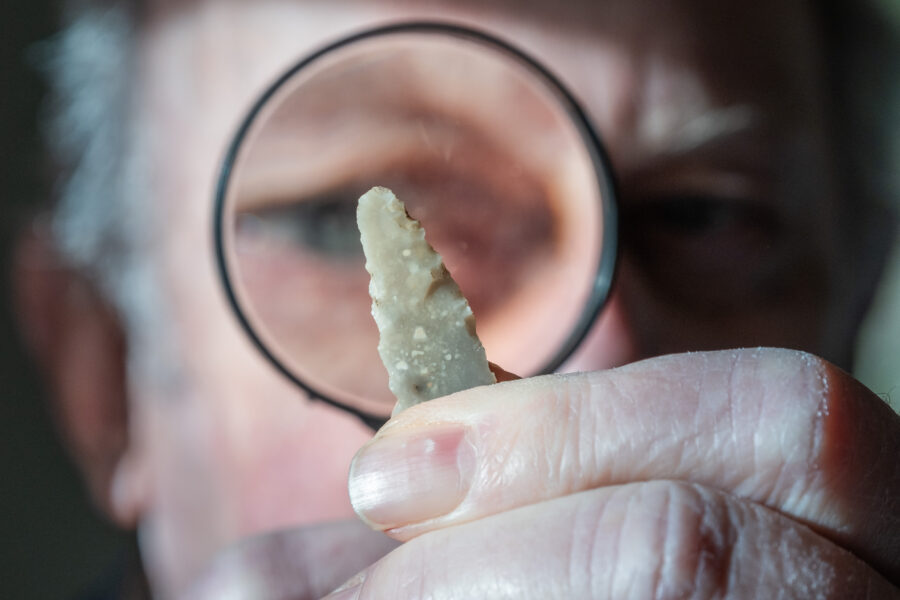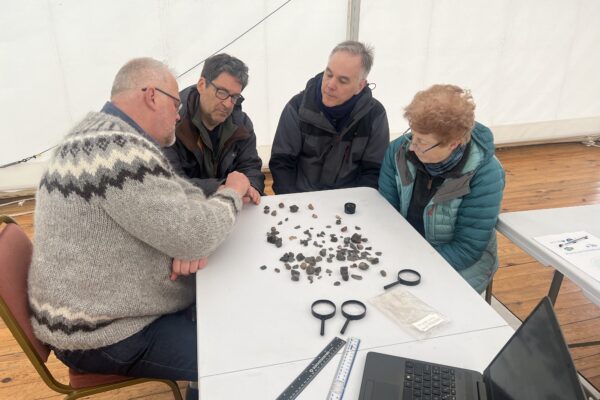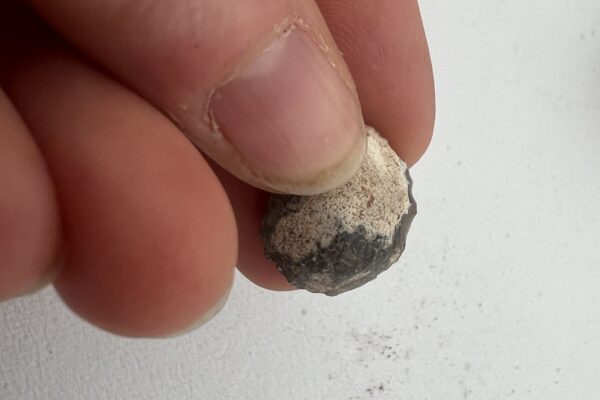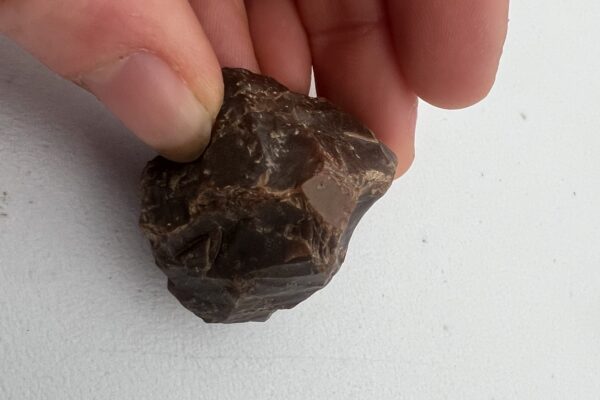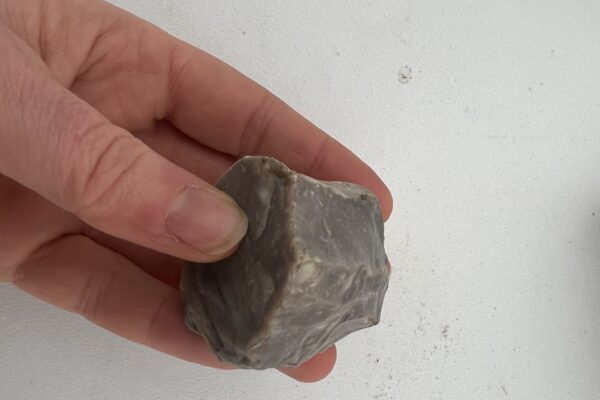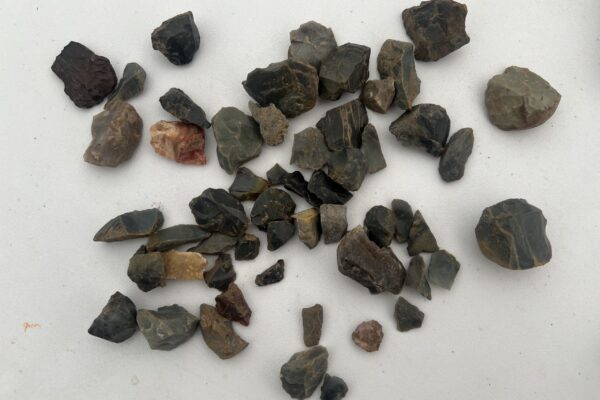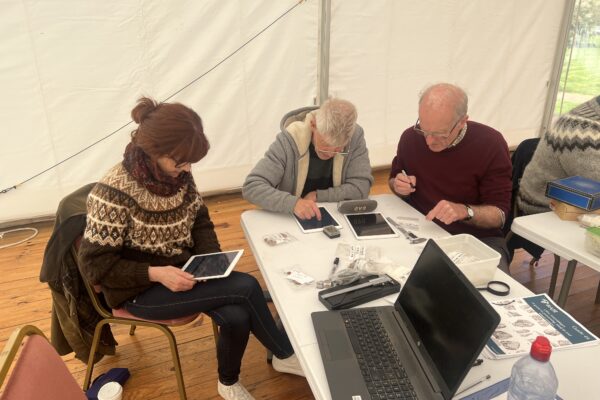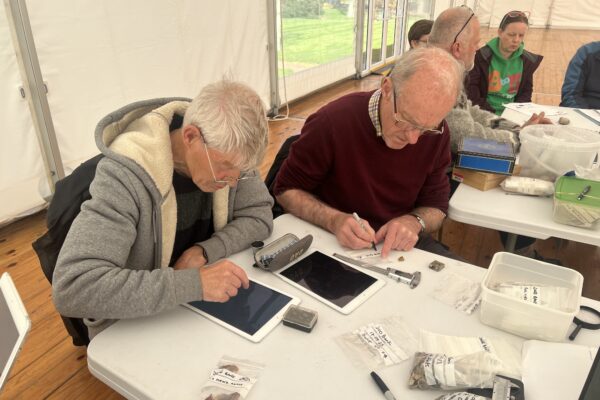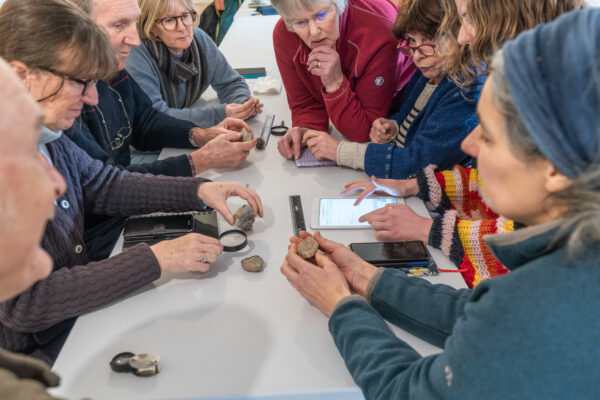Prehistoric Paxton
Paxton is located close to the confluence of the Whiteadder and the Tweed, leaving a narrow strip of land between the two bodies of water.
Volunteers have been fieldwalking for lithics in the fields around Paxton and have gathered a substantial number of lithics over the years, indicating a significant prehistoric presence in the region.
Uncovering the Tweed has been working with these local archaeologists to identify and catalogue this significant lithics assemblage, and have led test-pit excavations at key focal points where concentrations of lithics indicate activity in the past.

Lithics workshop at Paxton House
To better understand this assemblage, archaeologists Kristian Pedersen and Torben Bjarke Ballin ran an introductory workshop in January 2025, during which participants could learn more about lithics and basic identification of different tool types. This proved very popular and the team have been working on follow up workshops to catalogue the lithics to better understand the material represented in and around the rivers.
So far, there has been a mixed assemblage with material from the Mesolithic, Neolithic and Bronze Age represented. At the moment the emerging picture is that the Mesolithic material predominates, there are also several nice platform cores, a thumbnail scraper and a fragmented barbed and tanged arrowhead.
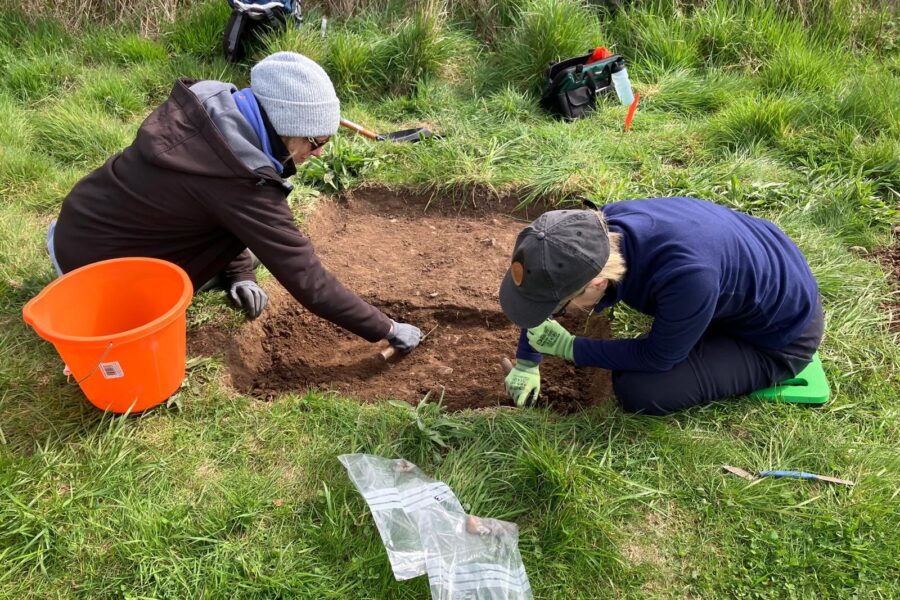
Test Pit Excavations
As part of the ongoing investigation of the prehistory of Paxton we are undertaking test pitting along the field margins, focussing on areas where concentrations of lithics have been found during fieldwalking. By mapping distributions and densities of the finds in more detail we aim to locate any concentrations of lithics which could indicate the presence of underlying features or archaeological sites relating to different periods in early prehistory. Through understanding more about the lithic assemblage and linking it to any surviving buried deposits we hope to understand more about how the early communities in this area were moving through, using and settling in the landscape of the Lower Tweed.
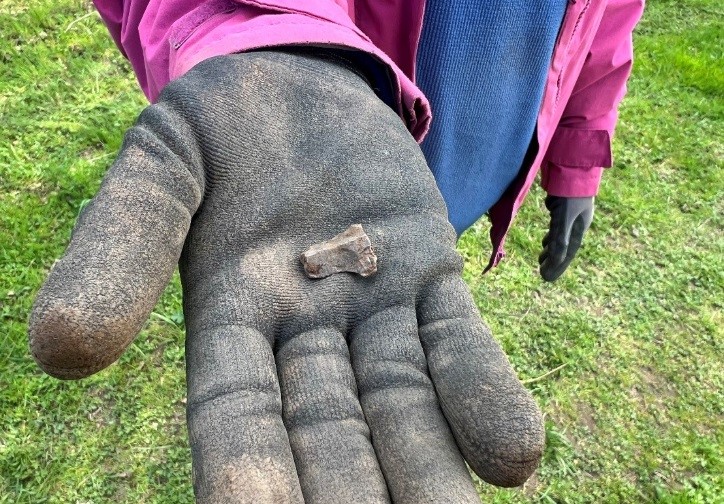
In every test pit, the artefactual assemblage was derived from the upper ploughzone deposit at the field edge. Finds included struck lithics including flint, chert and quartz material. The majority of the assemblage from the test pits represents debitage or waste fragments from lithic working. However, several complete or broken tools were also identified.
The diagnostic material throughout the assemblage points towards a Late Mesolithic signature with smaller quantities of material potentially dating to the Neolithic and several barbed and tanged arrowheads indicating early Bronze Age activity. The Late Mesolithic material is of particular note as there are currently no other known Late Mesolithic sites confidently identified on the lower Tweed.
We will share further updates on this project here as they become available.
Further Reading
Bjarke Ballin, T. 2017. Lithic Assemblages A guide to processing, analysis and interpretation. BAJR Practical Guide Series 49. 49_Lithics_guide
Bjarke Ballin, T. 2021. Classification of Lithic Artefacts from the British Late Glacial and Holocene Periods – Archaeopress. archaeopress.com/Archaeopress/Contributor/Torben-Bjarke-Ballin
